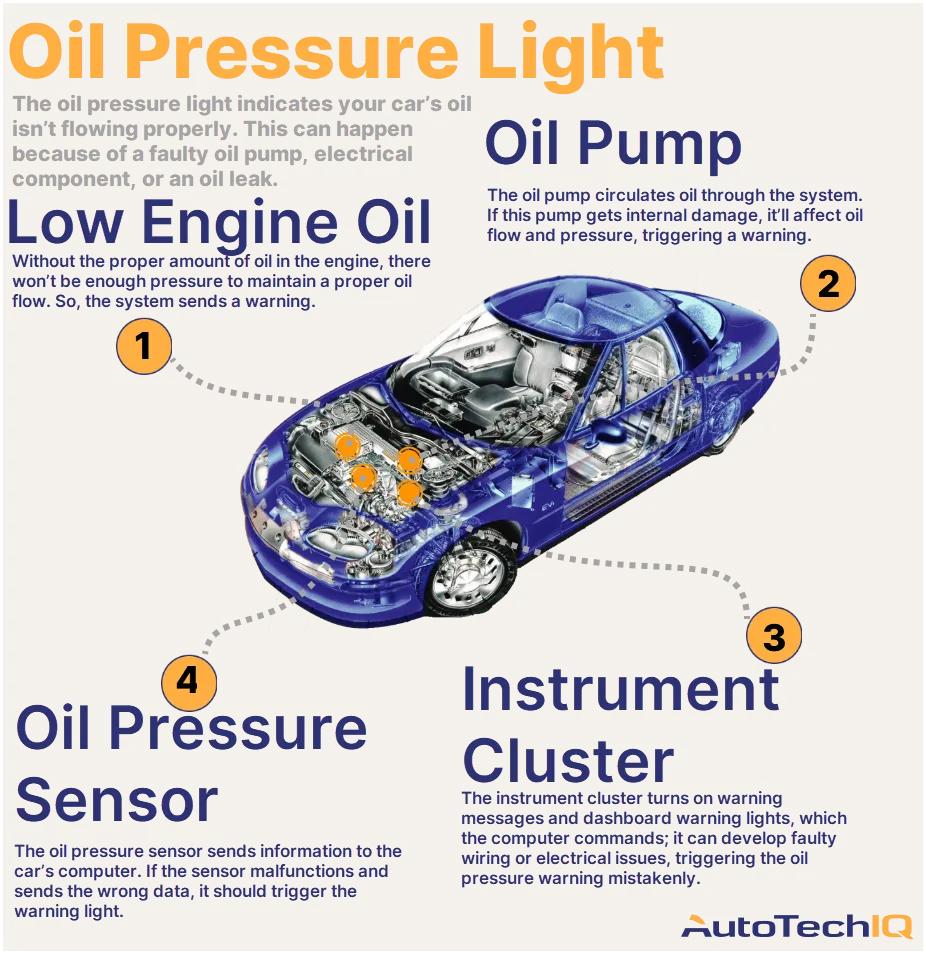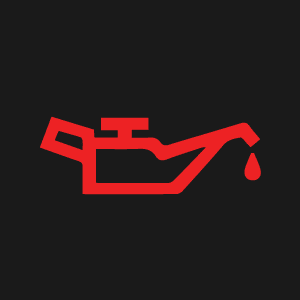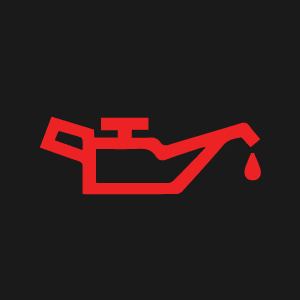If the oil light is on in your BMW, it’s not safe to drive. Continuing can cause severe engine damage.
When the oil light illuminates, pull over immediately to a safe spot and turn off the engine. Driving with the oil light on can lead to increased friction among engine parts, resulting in overheating and extensive wear. It’s crucial to address this issue promptly to prevent long-term damage to your vehicle.
Ignoring the warning could potentially lead to engine failure, which can be dangerous and costly. Prioritize your safety and the health of your BMW by addressing the oil light promptly.

Credit: m.youtube.com
The Role Of The Oil Light
The oil light, also known as the oil pressure warning light, is a crucial indicator in your BMW. It serves as a sentinel, warning you of potential issues with the oil pressure in your engine. When this light illuminates on your dashboard, it demands immediate attention. Ignoring it can lead to severe engine damage and costly repairs.
Decoding The Oil Light Indicator
The oil light is designed to alert you when there’s a drop in oil pressure. It typically looks like an oil can or a dripping oil symbol. When this light comes on, it’s a clear signal that your engine might not be receiving enough lubrication, which is essential for preventing friction and overheating.
What Triggers The Oil Light To Illuminate?
The oil light can be triggered by various factors, including low oil levels, a faulty oil pressure sensor, or a clogged oil filter. Low oil pressure can also result from engine wear and tear or a malfunctioning oil pump. Regardless of the cause, driving with the oil light on is not safe and can lead to significant engine damage.
Immediate Actions Upon Oil Light Activation
Upon activation of the oil light in your BMW, it is crucial to immediately pull over to a safe spot. Driving with the oil light on can lead to engine damage due to low oil levels. It’s best to turn off the engine and seek professional assistance promptly.
Steps To Take When The Oil Light Comes On
If you see your BMW’s oil light come on while you’re driving, it’s important to take immediate action. Here are the steps you should take:
- Pull over to a safe location as soon as possible. Continuing to drive with the oil light on can cause severe damage to your engine, so it’s best to turn off the engine and get out of the car.
- Check the oil level using the dipstick. If the oil level is low, add more oil to the engine. Make sure you use the type of oil recommended by BMW for your specific model.
- If the oil level is not low, it’s possible that your oil pump or oil pressure sensor may be malfunctioning. In this case, it’s best to have your car towed to a BMW repair shop for diagnosis and repair.
The Dangers Of Delayed Response
If you ignore the oil light and continue to drive your BMW, you’re putting your engine at risk for serious damage. Low oil pressure can cause increased friction between engine components, leading to overheating and significant wear and tear. In some cases, driving with low oil pressure can even cause engine failure. It’s important to address the issue as soon as possible to avoid costly repairs and potential safety hazards. If you’re unsure about the cause of the oil light activation, it’s best to have a professional BMW mechanic diagnose the problem. Remember, the oil light is a warning system designed to protect your engine. Don’t ignore it.
Understanding Oil Pressure And Engine Health
Driving your BMW with the oil light on can lead to severe engine damage due to low oil pressure. Pull over immediately to prevent overheating and wear on engine components. It’s crucial to address the issue promptly to avoid costly repairs and maintain engine health.
The Link Between Oil Pressure And Engine Function
Understanding the correlation between oil pressure and engine function is crucial for maintaining your BMW’s health.
How Oil Pressure Affects Bmw Performance
Proper oil pressure is vital for optimal performance in your BMW. Low oil pressure can lead to engine damage.
Credit: www.quora.com
Risks Of Driving With The Oil Light On
Driving your BMW with the oil light on can pose serious risks to your vehicle’s engine and overall performance. Ignoring the oil light can lead to potential engine damage and long-term implications for your BMW.
Potential Engine Damage
Continuing to drive with the oil light on can result in severe engine damage. Low oil levels can lead to increased friction between engine components, which may cause overheating and significant wear and tear. The lack of proper lubrication can also lead to premature wear and potential damage to engine bearings, crankshaft, and other vital components. This can lead to costly repairs and even complete engine failure.
Long-term Implications For Your Bmw
Driving with the oil light on can have long-term implications for your BMW’s performance and longevity. Persistent low oil levels can lead to accelerated engine wear and reduced lifespan of crucial engine parts. Additionally, it can impact the overall reliability and resale value of your BMW. Neglecting the oil light can also void any existing warranty, leading to potential financial implications.
Bmw Specific Concerns
When it comes to driving a BMW with the oil light on, there are some specific concerns that BMW owners should be aware of. These concerns relate to the oil level sensor issues and the unique risks associated with BMW vehicles.
Bwm Oil Level Sensor Issues
BMW vehicles are equipped with oil level sensors that monitor the amount of oil in the engine. However, these sensors can be prone to malfunction, leading to inaccurate readings and potential warning light activation. This can create confusion for drivers, as they may not know whether the oil light is indicating a genuine low oil situation or a faulty sensor.
Unique Risks For Bmw Vehicles
Driving a BMW with the oil light on poses unique risks due to the high-performance nature of BMW engines. BMW engines are precision-tuned and can be more sensitive to oil levels and pressure. Continuing to drive with the oil light on can lead to increased friction between engine components, potentially causing overheating and significant wear and tear.
In addition, ignoring the oil light in a BMW can result in severe engine damage and even accidents. Therefore, it is crucial for BMW owners to address the oil light promptly and not take any chances with the vehicle’s performance and safety.

Credit: www.autotechiq.com
Mechanical Insights: Oil Light Scenarios
When the oil light on your BMW illuminates, it’s crucial to understand the potential mechanical scenarios that could be at play. These scenarios range from oil pump failure symptoms to clogged oil pump screen consequences.
Oil Pump Failure Symptoms
- Drop in oil pressure
- Engine overheating
- Loud engine noise
Clogged Oil Pump Screen Consequences
Consequences of a clogged oil pump screen may lead to:
- Reduced oil flow to engine components
- Increased friction and heat
- Potential engine damage
Professional Advice On Oil Indicators
Driving your BMW with the oil light on is not recommended as it can lead to engine damage due to low oil levels. It’s crucial to pull over to a safe spot immediately when the oil light comes on to prevent further issues.
Regularly check and maintain your oil levels to ensure optimal engine performance and longevity.
Mechanic’s Perspective On Oil Warning Lights
When it comes to the oil warning light on your BMW, it’s essential to understand its significance. According to professional mechanics, the oil light is an indicator of low oil pressure or low oil level in the engine. It’s not safe to ignore the warning light and continue driving as it can cause severe damage to the engine. In some cases, it can lead to engine failure, which can be expensive to repair.
Recommended Service Intervals And Checks
To prevent the oil warning light from coming on, it’s essential to follow the recommended service intervals and checks. BMW recommends checking the oil level every 1,000 miles and changing the oil and oil filter every 7,500 miles or once a year, whichever comes first. However, it’s best to check your owner’s manual for the recommended service intervals for your specific BMW model. Regularly checking and changing the oil can help prevent engine damage and ensure your BMW runs smoothly. It’s also essential to use the recommended oil type and weight for your BMW model.
Code To Check Oil Level
To check the oil level in your BMW, follow these simple steps:
- Start the engine and let it run for a few minutes to warm up the oil.
- Turn off the engine and wait a few minutes for the oil to settle.
- Locate the oil level indicator, which is usually a dipstick or electronic gauge.
- Pull out the dipstick or check the electronic gauge to see the oil level.
- If the oil level is low, add the recommended oil type and weight until it reaches the proper level.
By following these recommended service intervals and checks and using the correct oil type and weight, you can help prevent the oil warning light from coming on and ensure your BMW runs smoothly.
Preventative Measures And Maintenance Tips
When it comes to your BMW, keeping an eye on the oil light warning is crucial for the health and longevity of your vehicle. Regular maintenance and DIY checks can help you avoid potential issues and ensure your BMW runs smoothly. Let’s explore some preventative measures and maintenance tips to keep your car in top condition.
Regular Maintenance To Avoid Oil Light Warnings
Regular maintenance is essential for preventing oil light warnings in your BMW. Scheduling regular oil changes as per the manufacturer’s recommendations is vital to maintain proper oil levels and quality. Additionally, routine inspections by a qualified mechanic can help identify any potential issues before they escalate.
Diy Checks: Ensuring Proper Oil Levels
Performing DIY checks to ensure proper oil levels in your BMW is a proactive way to prevent the oil light from coming on unexpectedly. Regularly checking the oil level using the dipstick and monitoring for any oil leaks under the vehicle can help you detect and address potential problems early on.
Navigating Warranties And Oil Light Issues
When it comes to the oil light on your BMW, it’s crucial to understand the implications it may have on your warranty and service records. Driving with the oil light on can lead to potential engine damage, but it can also impact your warranty coverage and service records. Let’s delve into how this can affect your warranty and the importance of documentation and service records.
How Driving With The Oil Light On Can Affect Your Warranty
Driving your BMW with the oil light on can have serious implications for your warranty coverage. Continuing to drive with the oil light illuminated can lead to engine damage, which may not be covered under warranty if it’s determined that the damage resulted from neglecting the warning signs. This negligence could potentially void your warranty, leaving you responsible for any repair costs related to the damage caused by driving with the oil light on. It’s essential to address the issue promptly to avoid potential warranty complications.
Documentation And Service Records Importance
Maintaining accurate documentation and service records is crucial when it comes to addressing oil light issues with your BMW. When you encounter the oil light warning, it’s important to document the date, time, and any relevant details surrounding the incident. Keeping meticulous records can demonstrate your proactive approach to addressing maintenance concerns, which can be invaluable when navigating warranty claims or service-related discussions with your BMW dealership or service provider.
Read More: Best Oil for BMW 335I N54 Twin Turbo: Ultimate Guide
Faqs And Common Misconceptions
Can Low Oil Cause an Accident?
Driving with low oil levels can lead to engine damage, not directly to accidents.
Is Topping Off Oil a Temporary Fix?
Topping off oil is a temporary solution and not a substitute for regular oil changes.
Frequently Asked Questions
How Long Can I Drive With The Oil Light On?
Driving with the oil light on can cause severe engine damage. Pull over and turn off the engine immediately.
Can I Drive 30 Miles With An Oil Light On?
Driving 30 miles with the oil light on can cause severe engine damage. It’s best to pull over and turn off the engine as soon as possible. Continuing to drive can lead to overheating and significant wear and tear.
What Happens If You Drive A Bmw With Low Oil?
Continuing to drive a BMW with low oil can cause severe damage to the engine, including overheating and significant wear and tear. It is best to pull over to a safe location as soon as possible and turn off the engine.
Check the oil level and fill it to the correct level before driving again. It is not safe to drive with the oil light on.
What Does The Oil Can Light Mean On A Bmw?
The oil can light on a BMW indicates low oil level, signaling the need for immediate attention to prevent engine damage.
Conclusion
Driving your BMW with the oil light on can lead to severe engine damage. It’s crucial to pull over immediately and address the issue to prevent further complications. Ignoring the warning could result in costly repairs or even engine failure.
Prioritize your safety and vehicle maintenance.


